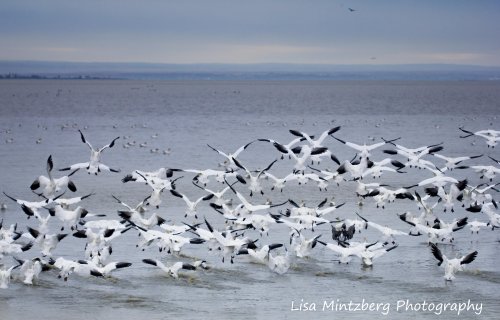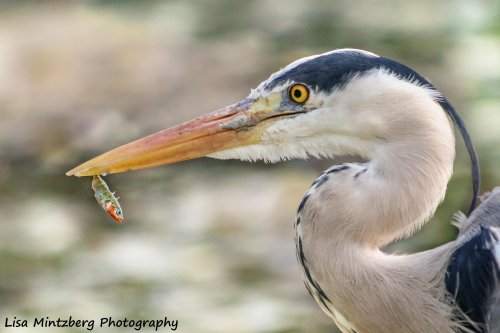Picture yourself in your favourite park on beautiful day, you’ve found a quiet shady place under a tree or perhaps you’ve snagged that coveted bench spot that is always taken. You’ve brought with you a beverage and of course the book you can’t wait to start, and have cleared the afternoon to do nothing but read.

The above scenario is where my mind goes with I think about all the interesting reading and listening I’ve planned to do this summer, although it seldom works out the way it is described above, I always expect to do more reading in the warmer months and set high expectations for the amount of “stuff” I’d like to dive into.
(Image: Silver Creek Park Guelph, ON)
Last year, we asked staff and board members to tell us what they were planning on reading this summer for work or pleasure, I suspect most of us try and make time for both. This year we have deliberately left the theme open. We have also added to the party and requested some ideas and top picks from workshop leads for this year’s EconoUs to help energize our minds for the upcoming conference.
Below you will find reading and listening suggestions from our board members, staff and Econous 2017 workshop leads. We hope that you will find something intriguing to add or push to the top of your summer reading list!
We’ve love to hear what you’re reading and listening to over the summer months. Join the conversation and share with us via Facebook or Twitter with the #CCEDNetsummerreads
Click on the contributor’s name to scroll down and see their summer reading suggestions.
Contributors:
Kaitlin Lauridsen– Senior Consultant, Centre for Race and Culture & EconoUs 2017 workshop lead
Marriane Jurzyniec – Board Member
Jeff Loomis – Executive Director, Momentum & EconoUs 2017 workshop lead
Wendy Keats – Board Member & EconoUs 2017 workshop lead
Candice Davis – CCEDnet National Conference and Communications Assistant
David LePage – Co-founder and Managing Partner, Buy Social & EconoUs 2017 workshop lead
Laurie Cook – Board Member & EconoUs 2017 workshop lead
Ryan Gibson – Board President
Kaitlin Lauridsen
by Tina Lopes and Barb Thomas
This is a must-have book for any organization working on challenging racism. “Dancing on Live Embers investigates how racism, White power and privilege work in the ordinary, daily moments of organizational life. It holds up familiar workplace interactions for scrutiny and analysis and looks for openings to advance racial equity and justice.”
by Shakil Choudhury
“The Deep Diversity model outlined in this book seeks to reframe the debate regarding systemic racism and discrimination in a practical, scientific and compassionate manner.”
White Like Me
by Tim Wise
Excellent read for White folks wanting to advance racial equity work. Wise encourages his readers to critically self-reflection on race and privilege by examining the way in which racial privilege shapes the lives of White Americans in every realm of daily life.
Colorlines is an award-winning, daily news site featuring investigative reporting and news analysis from the perspective of communities of color.
What I will be reading this summer:
by Kamal Al-Solaylee
“At once personal and global, Brown is packed with storytelling and on-the-street reporting conducted over two years in ten countries on four continents that reveals a multitude of lives and stories from destinations as far apart as the United Arab Emirates, the Philippines, the United States, Britain, Trinidad, France, Hong Kong, Sri Lanka, Qatar and Canada. It features striking research about the emergence of brown as the colour of cheap labor and the pursuit of a lighter skin tone as a global status symbol. As he studies the significance of brown skin for people from North Africa and the Middle East, Mexico and Central America, and South and East Asia, Al-Solaylee also reflects on his own identity and experiences as a brown-skinned person (in his case from Yemen) who grew up with images of whiteness as the only indicators of beauty and success.”
More About Kaitlin
Marianne Jurzyniec
by Steve Richards 
As you’ll note from the description below, there’s an endless list of questions surrounding today’s politics. As someone who is keenly interested in democratic institutions I feel this book will be just one of many with this focus on my reading list this year.
Something strange has been happening. All over the world, people are angry and rejecting the establishment like never before. Britain votes Brexit. Trump promises walls in America. Corbyn promises a new socialism in the UK. Tsipras in Greece. Podemos in Spain. Marine Le Pen in France. Norbert Hofer in Austria. The list goes on. Why has the mainstream lost support? Why are the outsiders flourishing on far left and far right? Do they have the answers to our problems? In this landmark book, political journalist Steve Richards provides a captivating account of the defining political phenomenon of this decade. Telling the riveting story of how eccentrics, ideologues, and strong men are breaking the political rules, he asks why they’re gaining support and examines the frightening implications of this new global rise in anti-establishment sentiment. Are we approaching a new age of populism, where democracy is eroded? The Rise of the Outsiders tackles all of these questions and more. Exploring how and if the mainstream can regain voters’ trust, this is a book that no politically engaged reader can afford to miss.
by Katherena Vermette 
Katherena Vermette is a Métis writer from Winnipeg, Manitoba. After learning more about her I have a great appreciation for her desire to lead change and advocate against the injustices faced by Indigenous people. This will be the first piece of her work that I’ve read but I’m already planning on taking in the rest of her collection.
When Stella, a young Métis mother, looks out her window one evening and spots someone in trouble on the Break — a barren field on an isolated strip of land outside her house — she calls the police to alert them to a possible crime.
In a series of shifting narratives, people who are connected, both directly and indirectly, with the victim — police, family, and friends — tell their personal stories leading up to that fateful night. Lou, a social worker, grapples with the departure of her live-in boyfriend. Cheryl, an artist, mourns the premature death of her sister Rain. Paulina, a single mother, struggles to trust her new partner. Phoenix, a homeless teenager, is released from a youth detention centre. Officer Scott, a Métis policeman, feels caught between two worlds as he patrols the city. Through their various perspectives a larger, more comprehensive story about lives of the residents in Winnipeg’s North End is exposed.
by William Mougayar
The debate on who owns and controls our digital identity is growing and there are some that make the argument that blockchain technology is a solution to a more transparent system with empowered users. For this reason I’ve chosen this book to gain better insight on blockchains and how they can be applied.
Blockchains are new technology layers that rewire the Internet and threaten to side-step older legacy constructs and centrally served businesses. At its core, a blockchain injects trust into the network, potentially cutting off intermediaries from serving that function and creatively disrupting how they operate. Metaphorically, blockchains are the ultimate non-stop computers. Once launched, they never go down, and offer an incredible amount of resiliency, making them dependable and attractive for running a new generation of decentralized services and software applications.
Jeff Loomis
Two books I recommend for people to read related to the workshop on microlending are:
by Muhammed Yunus
It is a classic telling of the story of the creation of microlending. The roots of the microlending starting in Bangladesh has inspired the spread of microlending by Grameen Bank and now so many other organizations around the world.
by Hugh Sinclair
This book shares the downside of the microlending movement globally. The tension of focusing on financial return and social benefit is examined and the book provides a cautionary tale on the pursuit of profit when providing financial services to people living in poverty. It is interesting to think about the global microlending industry challenges in relation to the rise of ‘fringe financial’ services in Canada, like payday lending, that justify their existence serving the ‘bottom of the pyramid’ market demand that has largely been neglected by mainstream financial institutions.
Two books I’m planning to read this summer that are only marginally related to microlending are:
by Joel Solomon
This is a hot-off the press book by a Canadian leader in social finance who founded Renewal Funds. I’m looking forward to an inspiring read on how money can make a positive difference in our world.
by Carol Dweck
Mindset is based on the research that a ‘growth’ mindset can enable our brains to learn and solve problems.
Carol Dweck also has a popular TED talk if people aren’t interested in reading the whole book .
More about Jeff
Wendy Keats
Here are the three books I’m reading now and I would highly recommend them all!
 13 Ways to Kill Your Community
13 Ways to Kill Your Community
by Doug Griffiths
If you want to know how to ensure CED doesn’t work, just do the things Doug Griffiths talks about in this book! Alternatively, you could do the opposite and build a strong local economy.
by Terry O’Reilly
For those of us without big marketing budgets, this book offers concrete suggestions from one of Canada’s most experienced marketing gurus around how to get the messages of non-profits and social enterprises heard above the crowd.
by Jason Fried & David Heinemeier Hansson
This book is written by the two young entrepreneurs who developed Basecamp and several other hugely successful software products. However, their business model is totally different and throws away all the traditional ways of starting and running a business. My friend who recommended this book is a top consultant in medical technology startups and says the business approach and model of Rework is brilliant.
More about Wendy
Candice Davis
 The Truth that the Wampum Tells – My Debwewin on the Algonquin Land Claims Process
The Truth that the Wampum Tells – My Debwewin on the Algonquin Land Claims Process
By Lynn Gehl
I have always been curious about the land claims process and how it works (or doesn’t) for individuals seeking a claim. Lynn Gehl released this book in commemoration of the 250th anniversary of the Treaty of Niagara. Despite this marker in history, the Algonquin Anishinaabeg still do not their full rights to land or resources. Gehl tells her story through the lens of her Debwewin Journey, which is an Anishinaabeg way of knowing that incorporates mind and spirit to bring out one’s own personal truth. The book is a refreshing approach and I recommend to anyone interested in reading an intriguing take on the land claims process from an insider.
David LePage
by Richard Reeves
“How the American upper middle class is leaving everyone else in the dust. Why that is a problem, and what to do about.”
This is specifically to the theme of “Thriving Communities” how the American upper middle class is leaving everyone else in the dust.” The author reflects and assesses on how socio-economic opportunities and systems and who they serve (and who they eliminate). He moves the notion of privilege and economic power from the 1% to the 20%.
More about David
Laurie Cook
Connecting the Power of People to the Power of Place: How Community-Based Organizations Influence Neighbourhood Collective Agency
by Jessica Carrière, Rob Howarth, and Emily Paradis
NCRP Research Paper, December 2016
I would strongly recommend a report that just came out in December from the Neighbourhood Change Research Partnership. Very good report on how to facilitate neighbourhood collective agency which we also think of as building resident leadership.
by Grant McDonald
This a blog by an old professor of mine. He’s retired now – but it’s really good. “Grant McDonald is a long-time advocate for and resource person to non-profit and charitable organizations.” The blog is formatted to encourage interaction and dialogue. He covers a variety of topics including board dynamics, public policy advocacy, organizational culture, ethics and managing resources.
Ryan Gibson
Rural Routes provides great podcasts on why rural areas are still important in Canada. Episode 15 features none other than CCEDNet’s Wendy Keats discussing the role of cooperatives and social enterprise in sustaining and revitalizing rural areas.
 Social enterprise development in the Hub City received a boost Tuesday with the announcement of an investment fund and community accelerator.
Social enterprise development in the Hub City received a boost Tuesday with the announcement of an investment fund and community accelerator.













 13 Ways to Kill Your Community
13 Ways to Kill Your Community This I Know: Marketing Lessons from Under the Influence
This I Know: Marketing Lessons from Under the Influence
 The Truth that the Wampum Tells – My Debwewin on the Algonquin Land Claims Process
The Truth that the Wampum Tells – My Debwewin on the Algonquin Land Claims Process
 The
The  On 20th and 21st October the EUKN welcomed
On 20th and 21st October the EUKN welcomed  Based in Milano, I currently work in real estate investments. Economist and Urban Manager by training, I worked the Urban Strategies and Planning department, of IHS developing connections with a wide range of initiatives in the city of Rotterdam and supporting IHS research and education activities. I also worked for the
Based in Milano, I currently work in real estate investments. Economist and Urban Manager by training, I worked the Urban Strategies and Planning department, of IHS developing connections with a wide range of initiatives in the city of Rotterdam and supporting IHS research and education activities. I also worked for the 
 “The greatest patriotism is to tell your country when it is behaving dishonorably, foolishly, viciously.” (Flaubert, from Flaubert’s Parrot by Julian Barnes)
“The greatest patriotism is to tell your country when it is behaving dishonorably, foolishly, viciously.” (Flaubert, from Flaubert’s Parrot by Julian Barnes) “Never doubt that a small group of thoughtful, committed citizens can change the world. Indeed, it is the only thing that ever has.” (Margaret Mead)
“Never doubt that a small group of thoughtful, committed citizens can change the world. Indeed, it is the only thing that ever has.” (Margaret Mead) Queen bees “never participate in the ordinary duties of the hive such as cleaning cells, tending the young, or gathering food. After performing their nuptial flights, queen honeybees function as little more than egg-laying machines…” (Thomas D. Seeley, Honeybee Ecology)
Queen bees “never participate in the ordinary duties of the hive such as cleaning cells, tending the young, or gathering food. After performing their nuptial flights, queen honeybees function as little more than egg-laying machines…” (Thomas D. Seeley, Honeybee Ecology)  “I had reached the end of my journey. Everything that surrounded me seemed to be my own property. I was the King of Mont Blanc—the statue of this tremendous pedestal.” (Jacques Balmat, on being the first person to reach the summit of Mont Blanc, 1786)
“I had reached the end of my journey. Everything that surrounded me seemed to be my own property. I was the King of Mont Blanc—the statue of this tremendous pedestal.” (Jacques Balmat, on being the first person to reach the summit of Mont Blanc, 1786)

 Wendy Keats is a co-founder and the Executive Director of the
Wendy Keats is a co-founder and the Executive Director of the  Diana Jedig has been the Executive Director for the
Diana Jedig has been the Executive Director for the  Carol Madsen has been on the Canadian CED Network board since 2005. She has been teaching in
Carol Madsen has been on the Canadian CED Network board since 2005. She has been teaching in  Based in Winnipeg, Kaye is the key Consultant with
Based in Winnipeg, Kaye is the key Consultant with  The Government of Canada is moving forward in the development of a Social Innovation and Social Finance Strategy to support communities in addressing their most difficult problems and help more people, especially those most vulnerable contribute to and share in the prosperity of their community and society.
The Government of Canada is moving forward in the development of a Social Innovation and Social Finance Strategy to support communities in addressing their most difficult problems and help more people, especially those most vulnerable contribute to and share in the prosperity of their community and society.
 CCEDNet’s Executive Director, Mike Toye, presented highlights from 2016 and presented the audited financial statements, noting that with the
CCEDNet’s Executive Director, Mike Toye, presented highlights from 2016 and presented the audited financial statements, noting that with the 





 Small communities can be amazing and High River, Alberta, Canada is at the top of my list right now. I’ve been with people in community there for three days. About 90 folks who care came out for one or more of four sessions of the Our High River Summit. That’s out of 13,000 people.
Small communities can be amazing and High River, Alberta, Canada is at the top of my list right now. I’ve been with people in community there for three days. About 90 folks who care came out for one or more of four sessions of the Our High River Summit. That’s out of 13,000 people. Bob Stilger founded New Stories in 2000 because he needed new stories about true community transformation. Bob’s ideas and connections rippled into the co-creation of the Art of Hosting as well as the Berkana Exchange. He also pioneered the concept of Enspirited Leadership. In 2010 Bob was invited to introduce Art of Hosting to Japan — a spiritual home since his student days there in the early seventies. For the last five years Japan has been his main place of work.
Bob Stilger founded New Stories in 2000 because he needed new stories about true community transformation. Bob’s ideas and connections rippled into the co-creation of the Art of Hosting as well as the Berkana Exchange. He also pioneered the concept of Enspirited Leadership. In 2010 Bob was invited to introduce Art of Hosting to Japan — a spiritual home since his student days there in the early seventies. For the last five years Japan has been his main place of work.  A quartet of Atlantic Canada Liberal MPs are calling on their own government to sharply ramp up financial support for economic growth in the region even though the four Atlantic provinces already get more federal funding for economic development than Quebec, Ontario, or Western Canada.
A quartet of Atlantic Canada Liberal MPs are calling on their own government to sharply ramp up financial support for economic growth in the region even though the four Atlantic provinces already get more federal funding for economic development than Quebec, Ontario, or Western Canada.